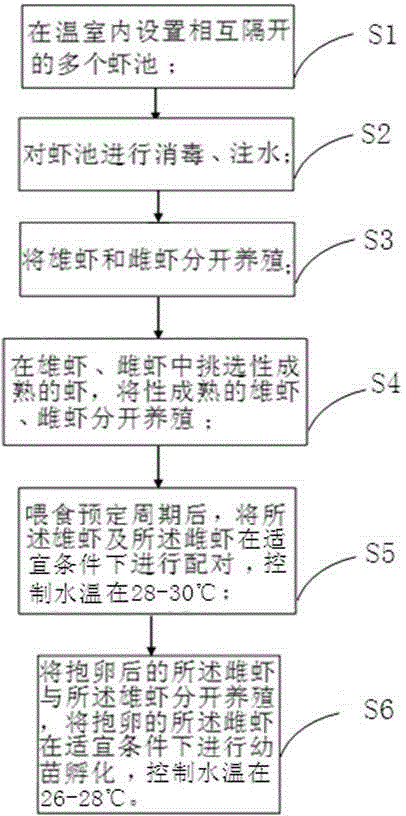Shrimp seed rearing method based on floor heating type greenhouse and shrimp pond adopting method
A floor heating and shrimp pond technology, applied in application, fish farming, climate change adaptation, etc., can solve the problems of low yield of shrimp seedlings, low income, crayfish cultivation, narrow breeding temperature range, etc. The effect of increased yield and mortality
- Summary
- Abstract
- Description
- Claims
- Application Information
AI Technical Summary
Problems solved by technology
Method used
Image
Examples
Embodiment Construction
[0017] Such as figure 1 As shown, the embodiment of the present invention provides a method for cultivating shrimp larvae based on a floor-heated greenhouse, which includes the following steps:
[0018] S1: Set up multiple shrimp ponds separated from each other in the greenhouse;
[0019] In this embodiment: the bottom of the shrimp pond is also provided with a cushion layer, and the cushion layer is preferably soil, which is convenient for laying pipes and planting aquatic plants on the soil. The shrimp pond is provided with a breeding box, a breeding box and a feeding platform. It is convenient for the prawns to be farmed separately and paired individually, and it is convenient for observation to provide sufficient feed without affecting the water quality.
[0020] S2: Disinfect the shrimp pond and fill it with water;
[0021] Specifically, the disinfection and water injection process includes the following steps: airing the shrimp pond for one week, disinfecting the shrimp pond w...
PUM
 Login to View More
Login to View More Abstract
Description
Claims
Application Information
 Login to View More
Login to View More - R&D
- Intellectual Property
- Life Sciences
- Materials
- Tech Scout
- Unparalleled Data Quality
- Higher Quality Content
- 60% Fewer Hallucinations
Browse by: Latest US Patents, China's latest patents, Technical Efficacy Thesaurus, Application Domain, Technology Topic, Popular Technical Reports.
© 2025 PatSnap. All rights reserved.Legal|Privacy policy|Modern Slavery Act Transparency Statement|Sitemap|About US| Contact US: help@patsnap.com

